With the high-profile eviction of Liebigstraße 34 in Friedrichshain, the tenuous existence of Berlin’s remaining occupied houses has reentered public consciousness. The city’s squats serve as a bastion of left-wing activism and community in the face of relentless gentrification. Few are now left.
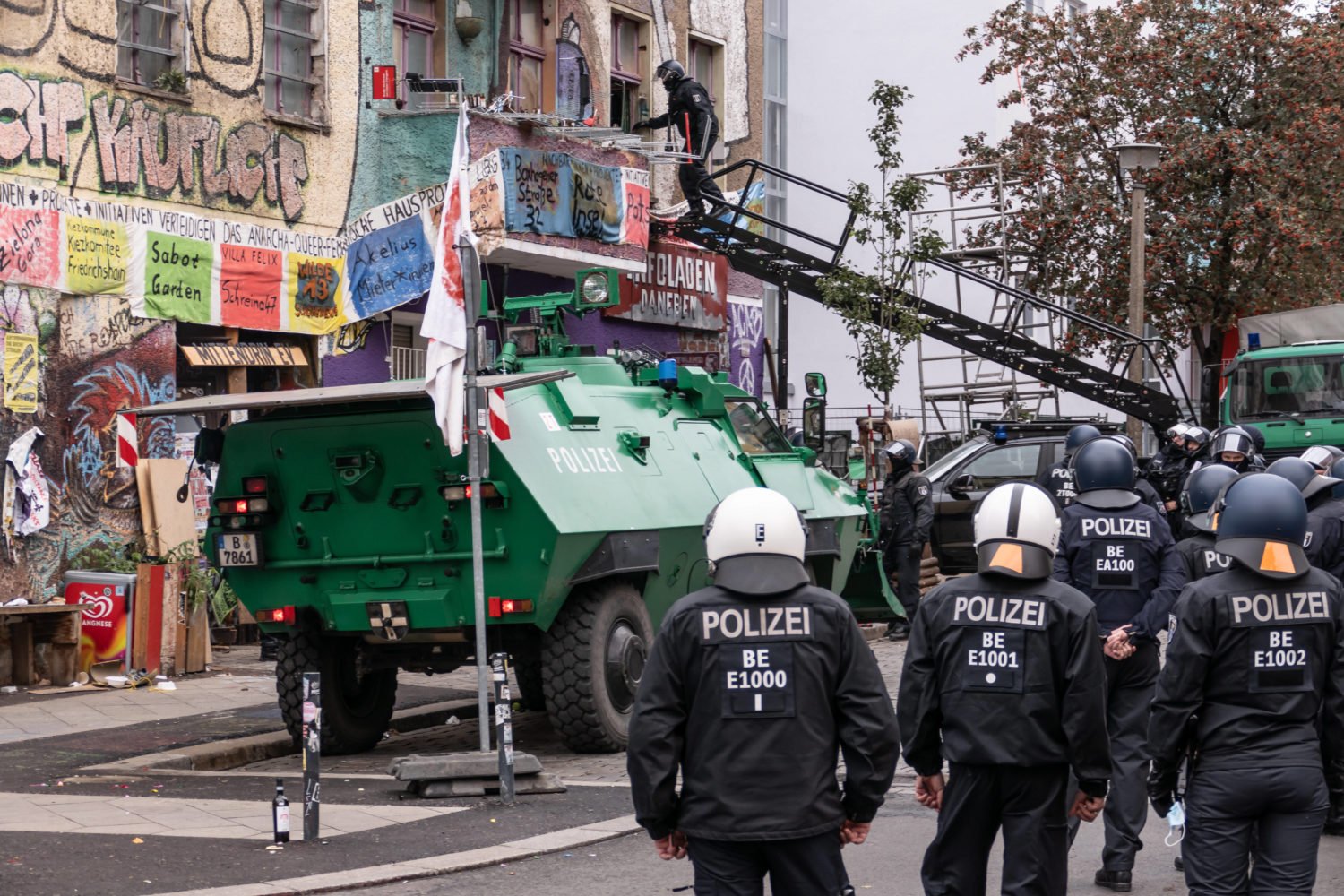
Occupied houses have been part of the Berlin cityscape since the early 1970s. In Kreuzberg, where the so-called Häuserkampf (house-to-house fighting) initially took place, empty and dilapidated old buildings were saved from demolition. The aim was to secure housing — but also to interfere with the Senate’s plans to raze entire apartment blocks to make way for a motorway access road.
The squatters’ movement, which emerged from leftist and autonomous circles, developed a new momentum after the fall of the Wall. While West Berlin squats were either legalised or evacuated, a new scene emerged in the east of the city from 1990 onwards. In Mitte, Friedrichshain and Prenzlauer Berg, artists, punks and lateral thinkers occupied many buildings — as their homes, but also as cultural sites and social projects.
Here are 12 famous Berlin squats that embody the city’s left-wing history.
Rigaer Straße 94
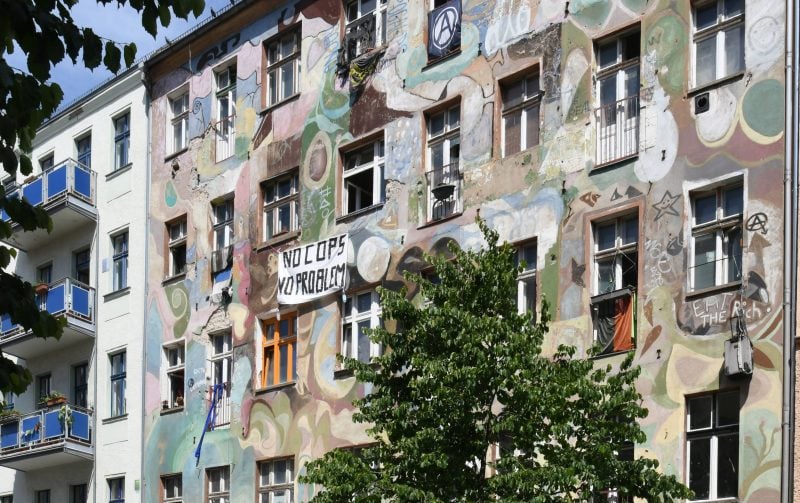
The building at 94 Rigaer Straße in the northern district of Friedrichshain was occupied in 1990. The Kadterschmiede bar resides in the commercial space on the ground floor, for which there is no rental contract. The rest of the house, transferred to the Jewish Claims Conference after the fall of the Wall and later sold to investors, is a legal housing project. Despite this, Rigaer 94 has made headlines repeatedly over the years, and is now regarded as the stronghold of the leftist scene.
- Rigaer Strasse 94, Friedrichshain
Liebigstraße 14
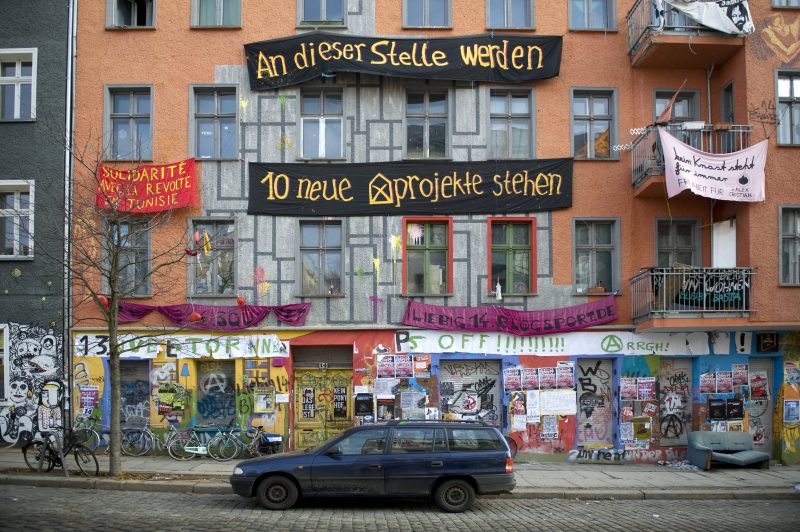
Liebigstraße 14 has also been occupied since 1990. Although some residents initially reached an agreement with the Friedrichshain housing association and rental contracts were signed, the situation escalated after the sale of the building to Lila GbR in 1999. The occupants of the housing project were given immediate notice in 2007, followed by a demonstration, court proceedings and finally eviction in 2011. After the owners renovated the building and rented it out again, there were numerous actions against the new tenants, who in turn spoke of “terror from the left-wing extremist scene”.
- Liebigstrasse 14, Friedrichshain
Liebigstraße 34
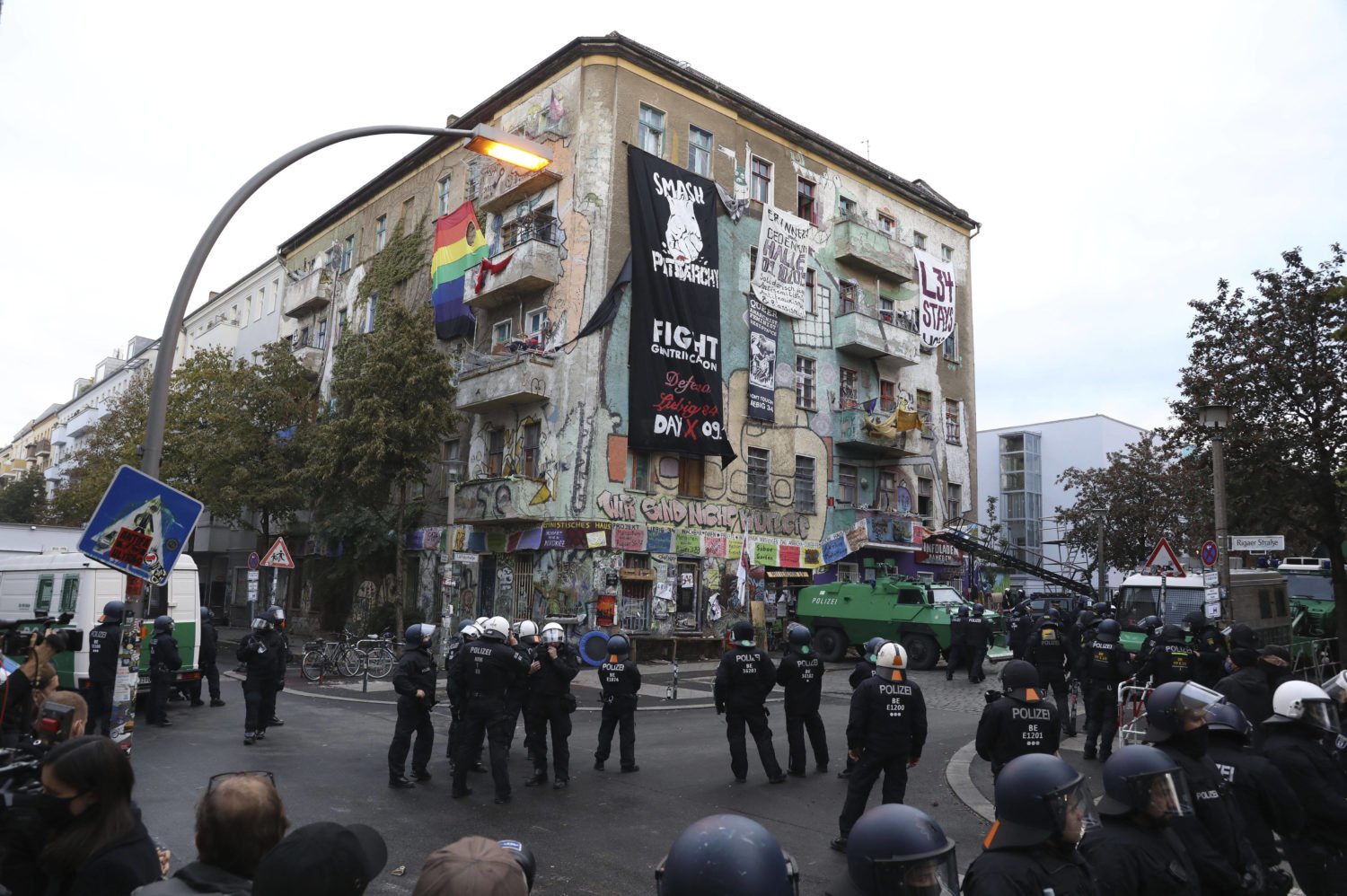
Liebigstraße 34 was occupied until 2020. In the preceding years, police operations and protests, some of them violent, occurred repeatedly. The final evacuation took place on October 9th, with over 1,500 police officers drafted in for the operation. The collective describes itself as the “anarcha-queer-feminist housing project Liebig 34”. In an interview in June 2020, one resident explained: “Our strategy is to not go down in silence. What we’ve been doing for some time now is putting pressure on our landlord, i.e. the owner”.
- Liebigstrasse 34, Friedrichshain
Brunnenstraße 183
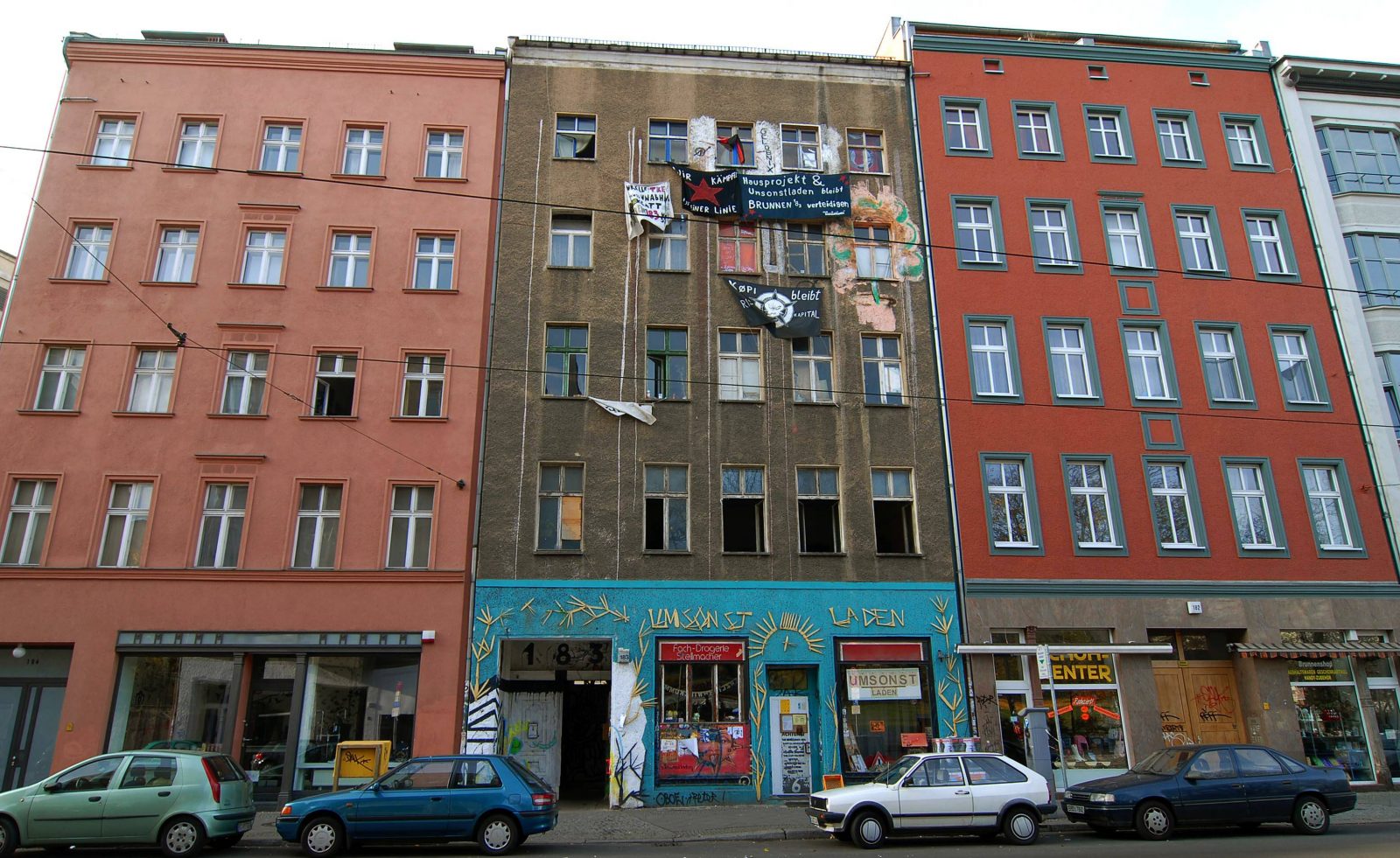
The building at Brunnenstraße 183 in Mitte was occupied in the early 1990s. Although the occupation was legalised and the community received rental contracts, these were questioned by the new owner who bought the house in 2006. After long court proceedings, the new owner was proved right and dismissed the occupants. Today, the façade is painted completely black and ‘Studio 183’ is emblazoned in huge gold letters. Until the eviction in 2009 it still read: “We all stay!”
- Brunnenstraße 183, Mitte
Köpi
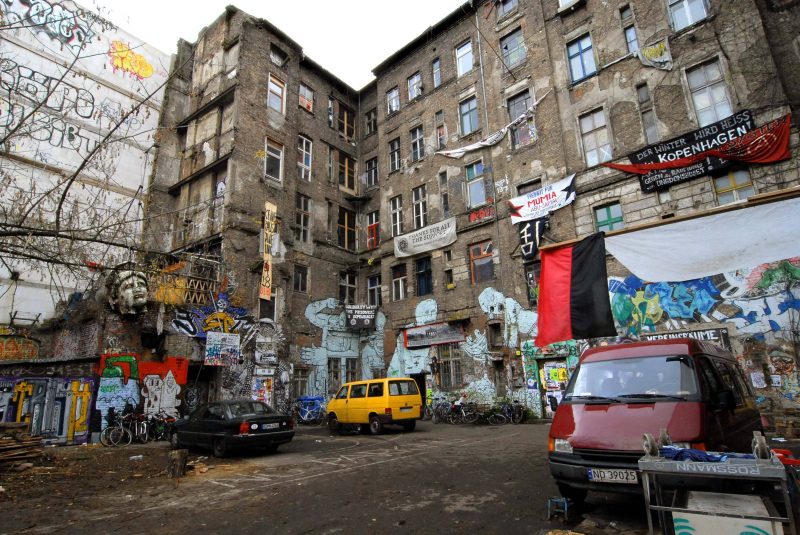
‘Köpi’ at Köpenicker Straße 137, right on the border of Kreuzberg and Mitte and not far from the banks of the Spree, is one of the most famous squats in Berlin. The enormous house has long been a thorn in the side of both the Senate and the owners. After initial legalisation, there were dismissals, eviction suits, changes of ownership and forced sales. None of this has changed the fact that ‘Köpi’ continues to exist and is an important venue for bands, artists and activists from the leftist spectrum, in addition to providing free residential space.
- Köpenicker Straße 137, Mitte
Linienstraße 206
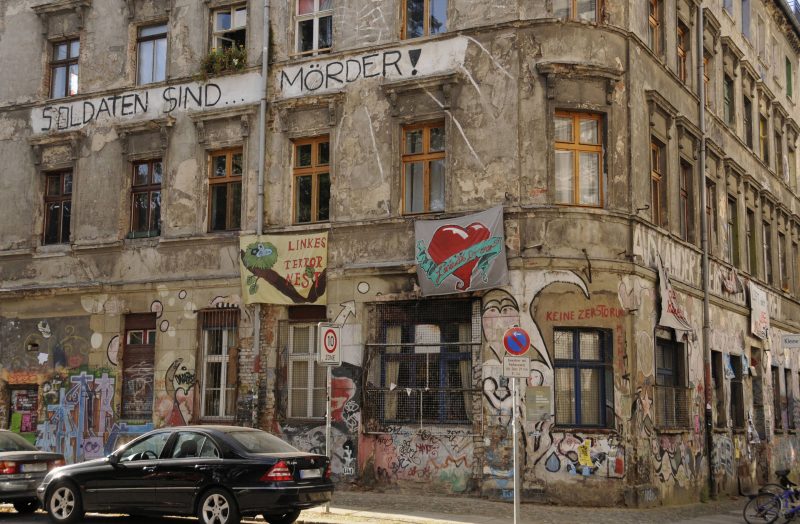
In Linienstraße, luxuriously revamped old buildings now stand alongside expensive new builds. Boutiques, restaurants and galleries prevail in an area populated by tourists and hipsters not far from Rosenthaler Platz. Like a relic from old times, the house occupied in 1990 on the corner of Kleine Rosenthaler Straße has stood for a long time. The grey, tattered façade, littered with banners and graffiti, no longer fits the affluent ambience of Berlin’s city centre. The speculative history of the house reads like a gentrification thriller. In 2016, shortly before the eviction, a resident said that the mere fact that the house still existed in this area was political.
- Linienstraße 206, Mitte
Tacheles
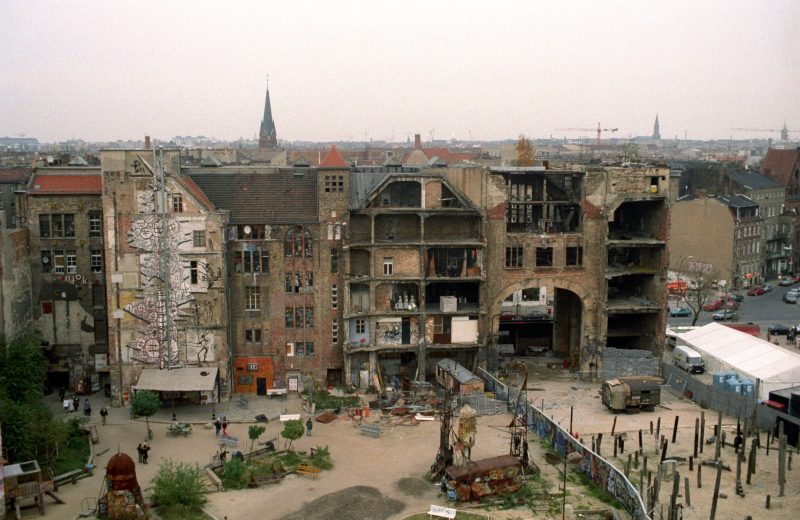
Kreuzberg has Künstlerhaus Bethanien, Mitte had Tacheles. While the squatters of the old hospital at Mariannenplatz were able to assert themselves and create an important hub for Kreuzberg’s cultural life in the heart of Kreuzberg 36 — and there was still room for the squatters from the cleared housing project Yorck 59 — Künstlerhaus Tacheles had to give up after several decades.
The old department store was occupied at the beginning of 1990. For a time there were studios, exhibition rooms, a cinema, theatre, pub and the huge open-air area where temporarily discarded military vehicles and even a Soviet fighter jet stood around. It was a utopian dream that lasted a long time. Mitte changed, Tacheles became a tourist attraction, but it remained. Until 2012. Since the evacuation, massive construction work has been carried out on the site.
- Oranienburger Strasse 54, Mitte
Mainzer Straße
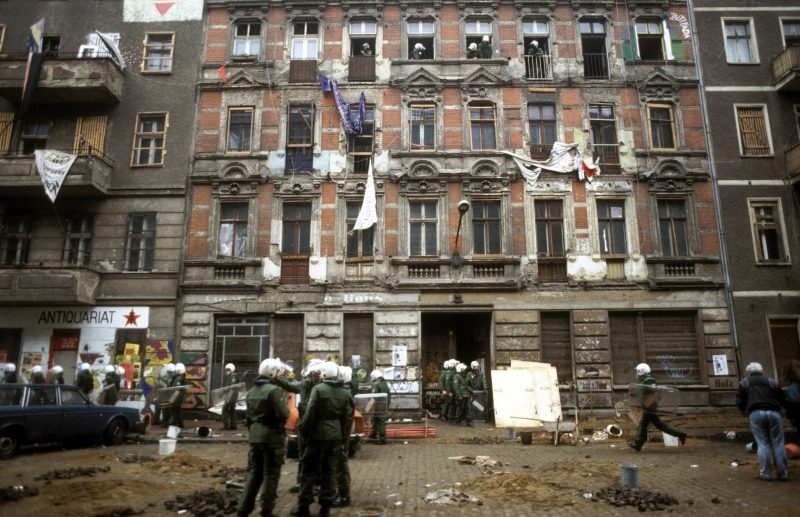
When people talk about squatting in Friedrichshain today, they think mainly of Rigaer- and Liebigstraße. Immediately after reunification, however, Mainzer Strasse, located in the southern neighbourhood, was synonymous with the squats of East Berlin. Not far from Boxhagener Platz, numerous houses were occupied — only to be swiftly cleared again. If you visit the area today, you’ll still find traces of the squatters there.
- Mainzer Straße, Friedrichshain
Marchstraße 23
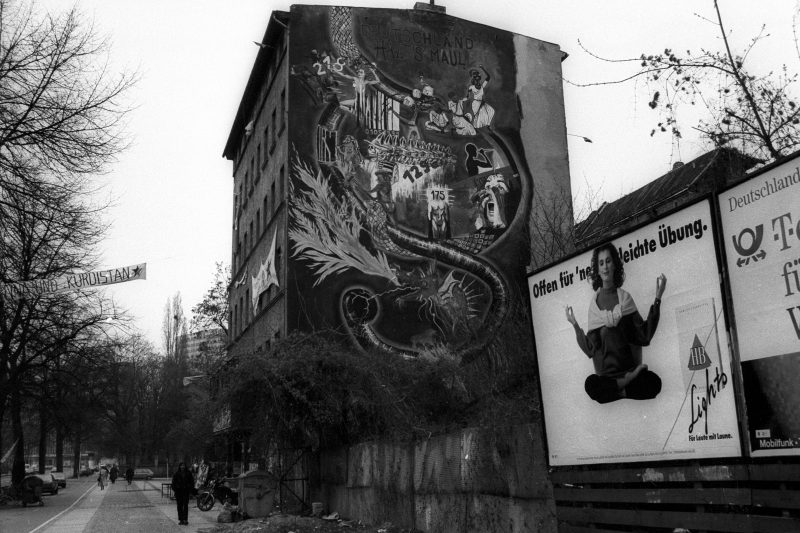
Most squatting in Berlin took place in Kreuzberg, Mitte and Friedrichshain. But not all! On Marchstraße in Charlottenburg, not far from TU Berlin and Einsteinufer, an alternative housing project existed from 1989 to 1996. For a long time it was known as the last occupied house in the West. Whether this is true or not is up for debate.
- Marchstraße 23, Charlottenburg
KuKuCK, Kunst- und Kultur-Centrum Kreuzberg
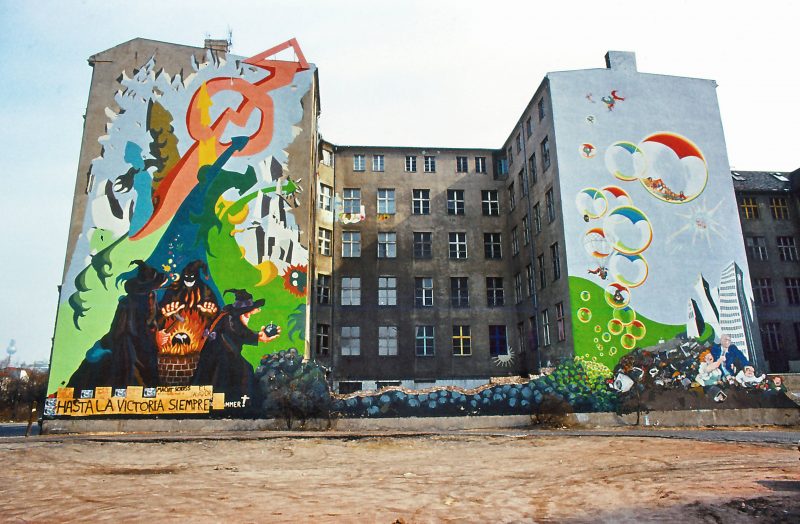
While some occupied houses in Kreuzberg have been able to secure their existence to the present day, the KuKuCK is almost forgotten. The house at Anhalter Straße 7, christened the Kreuzberg Art and Culture Centre, was occupied in 1981. There was a squatters’ council, cultural events and political debates were organised, and alternative forms of living and organisation were pioneered, for which Kreuzberg later became famous. The people behind the KuKuCK also contributed to this. Despite a great wave of solidarity and protests, the building was evacuated in July 1984. Today, the building is part of a hotel complex.
- Anhalter Straße 7, Kreuzberg
Tommy-Weisbecker-Haus
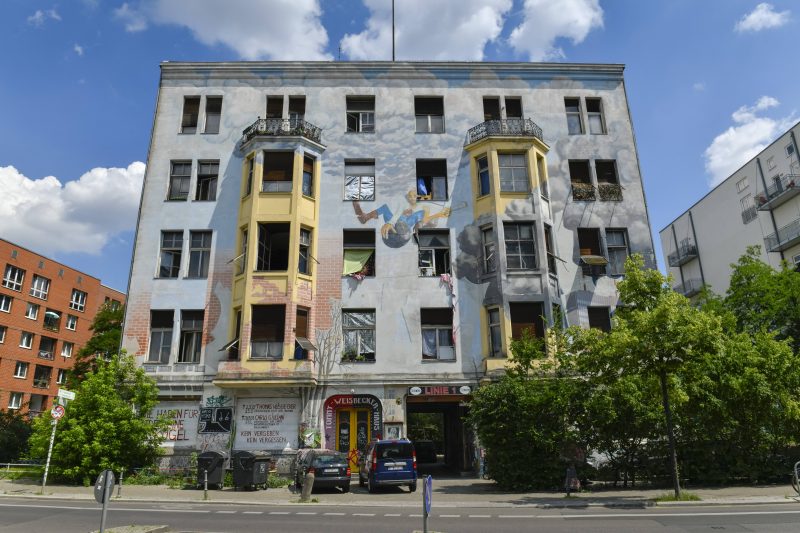
Self-organised, non-profit and dedicated to the cause: the Tommy Weisbecker House has been one of the most important squats in Berlin since 1973. After the occupation of the Schöneberger Drugstore, the oldest self-administered youth centre in Berlin, the Senate demanded the vacant building at Wilhelmstraße 9 for a new project that would serve as a contact point for young people. The squatters prevailed and named the project after Thomas Weisbecker, a member of the militant left-wing ‘2 June Movement’, who was shot dead by the police in 1972. After many squabbles, the house was renovated in the 1980s. Since 1990, the project has also included the bar ‘Linie 1’ and a venue for concerts. World-famous bands such as Rage Against the Machine and Queens of the Stone Age have played at ‘Tommy House‘.
- Wilhelmstraße 9, Kreuzberg
Georg-von-Rauch-Haus
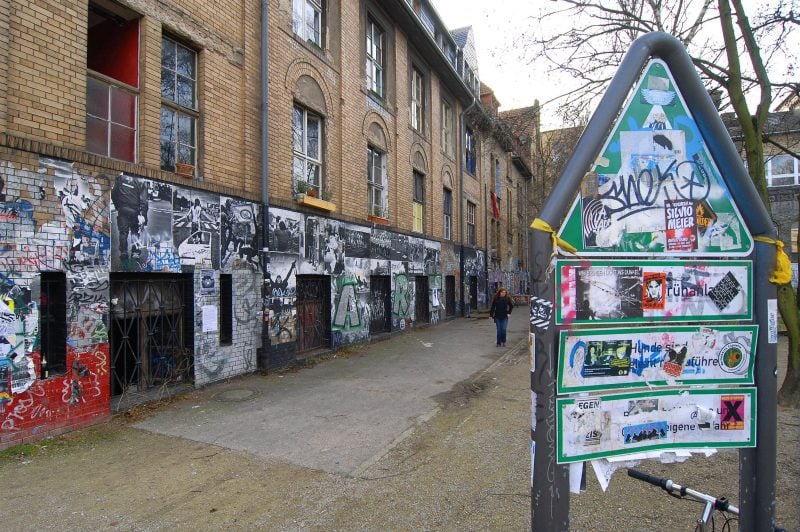
The former nurses’ residence at the Bethainen Hospital in Kreuzberg was occupied as early as 1971. The squatters founded the supporting association ‘Jugendzentrum Kreuzberg e.V.’ and negotiated legal usage and rental contracts with the Senate at an early stage. Although these were changed again and again, the house still exists today and will celebrate its 50th birthday in 2021.
- Mariannenplatz, Kreuzberg
Original article by Jacek Slaski
Berlin contains multitudes: from squats to art galleries in clubs to some seriously ugly buildings. And don’t miss the city’s most Instagrammable spots to pimp up your feed.




